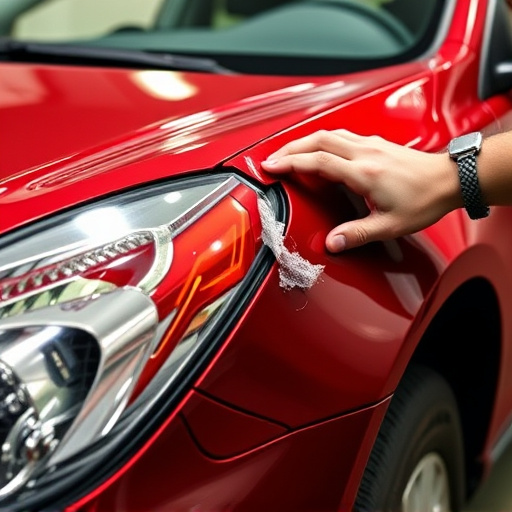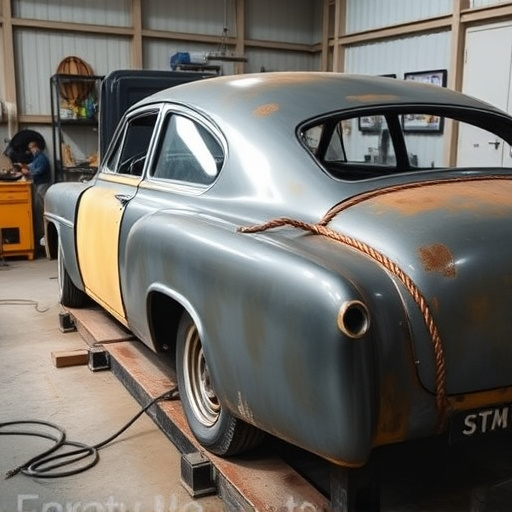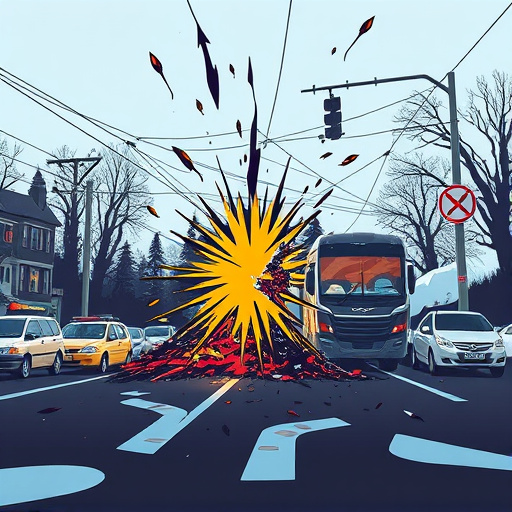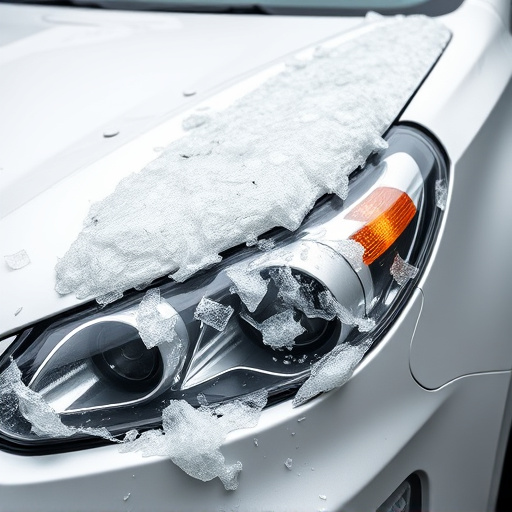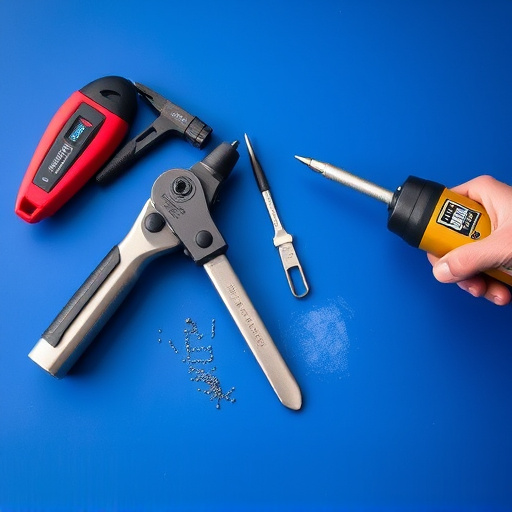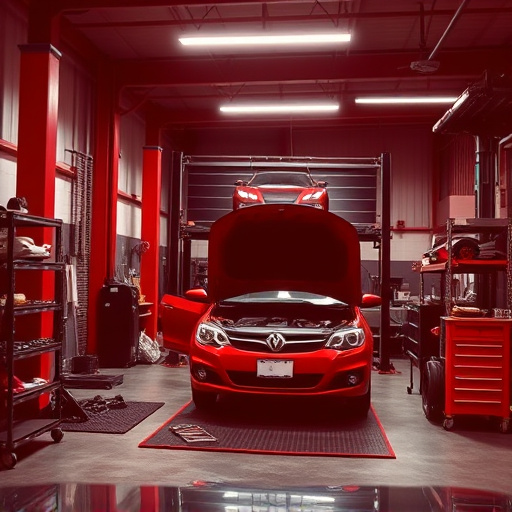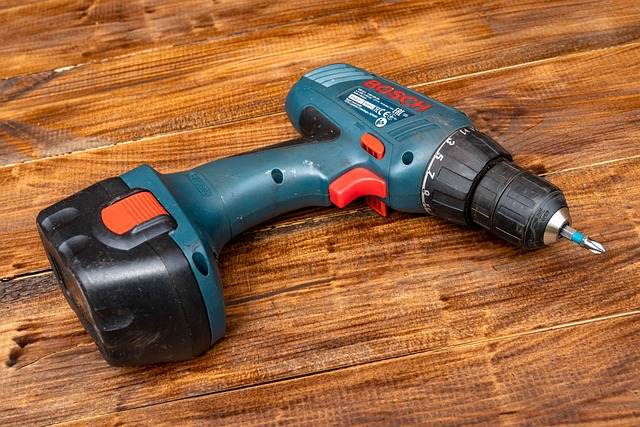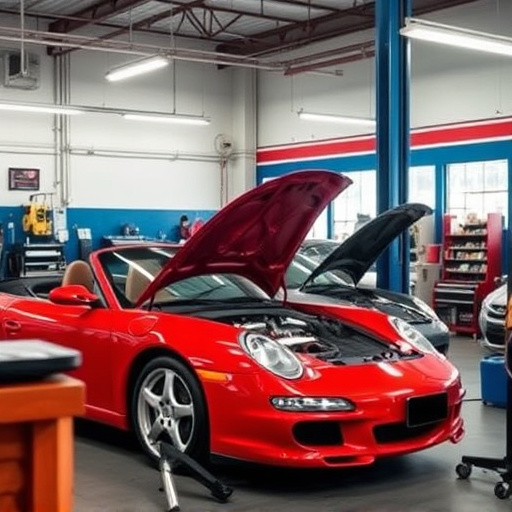Full panel replacement is a specialized automotive collision repair process that replaces damaged body panels (doors, fenders, hoods, roofs) to restore structural integrity and aesthetic appeal. It's ideal for complex vehicle designs or hard-to-find parts. This method offers precise fitting, seamless integration, and an aesthetically pleasing result, restoring your car to original factory specifications. Choose a reputable shop with state-of-the-art equipment for optimal results. While sectional repairs are cost-effective for minor dents, severe damage may still require full panel replacement for best auto maintenance outcomes.
Considering a new look for your roof? You might be wondering if a full panel replacement or sectional repair is the better option. This comprehensive guide breaks down both choices, offering insights into their unique benefits and drawbacks. We’ll explore what full panel replacement entails, its advantages, and when it makes sense to choose this approach. Additionally, we’ll delve into sectional repairs as an alternative, highlighting its pros and cons, so you can make an informed decision tailored to your needs.
- Understanding Full Panel Replacement: A Comprehensive Overview
- Benefits and Considerations for Choosing Full Panel Replacement
- Sectional Repair: An Alternative Option and Its Pros & Cons
Understanding Full Panel Replacement: A Comprehensive Overview

Full Panel Replacement: Unraveling the Process
In the realm of automotive collision repair, full panel replacement is a comprehensive solution offered by car body shops to restore damaged vehicles to their original state. This process involves the complete removal and replacement of a vehicle’s body panels, including doors, fenders, hoods, and sometimes even the roof. It is typically employed when a vehicle has sustained significant structural damage that extends across multiple panels, making individual repairs impractical or inefficient.
Automotive body shops skilled in full panel replacement utilize specialized equipment and techniques to ensure precise fitting and seamless integration of new panels with the existing vehicle structure. This method not only addresses visible aesthetics but also reinforces the overall safety and integrity of the car’s frame. For vehicles with complex designs or hard-to-find original parts, full panel replacement can be a game-changer, providing both functionality and visual appeal in the hands of experienced professionals at a reputable car body shop.
Benefits and Considerations for Choosing Full Panel Replacement
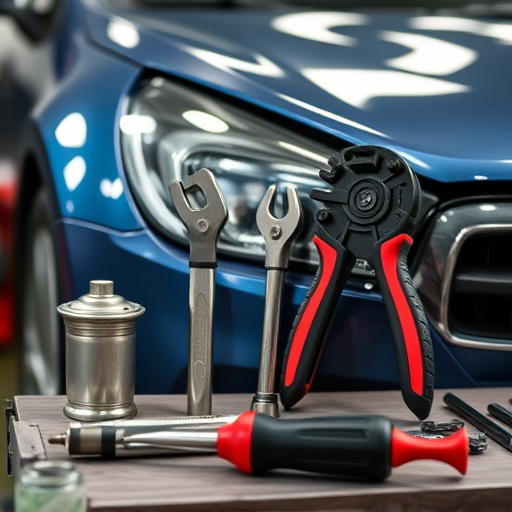
Choosing full panel replacement for car collision repair offers several significant advantages. This method involves replacing an entire damaged panel with a new one, ensuring precise fit and seamless integration into your vehicle’s existing structure. Unlike sectional repairs that focus on fixing specific parts of a damaged panel, full panel replacement minimizes the risk of future misalignments or weak points in the body. It also provides a more aesthetically pleasing result, as it restores your car to its original factory specifications.
When considering full panel replacement, it’s essential to select a reputable collision repair shop equipped with state-of-the-art equipment and highly skilled technicians. This ensures that the new panel is accurately measured and installed, aligning perfectly with your vehicle’s design. Moreover, opting for professional full panel replacement can help maintain or even enhance your car’s resale value, as it preserves the overall integrity and appearance of your vehicle, addressing not just visible car scratches but also underlying structural issues stemming from a collision.
Sectional Repair: An Alternative Option and Its Pros & Cons
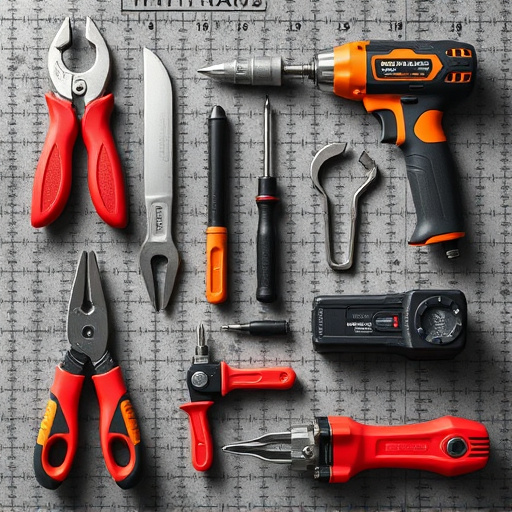
Sectional Repair offers a cost-effective alternative to replacing an entire panel. This method involves fixing or replacing only the damaged part of the car’s body, which can be ideal for smaller dents or specific areas that require attention. It’s a more tailored approach, allowing auto technicians to precisely match repairs with the existing paint and finish. One advantage is the potential savings; sectional repair can be cheaper than full panel replacement, especially for minor incidents where only a small area needs fixing.
However, there are considerations. The process may take longer as it requires meticulous work to ensure the repaired section seamlessly integrates with the rest of the car’s body. Moreover, not all shops offer this service, and finding a skilled technician specialized in sectional repair could be challenging. It’s also worth noting that while effective for smaller repairs, severe or extensive damage might still necessitate a full panel replacement for optimal results in auto maintenance and car dent repair.
When deciding between full panel replacement or sectional repair, the choice depends on various factors. Full panel replacement offers a complete, seamless upgrade with numerous benefits, such as improved aesthetics and enhanced structural integrity. However, it may be more costly and disruptive. On the other hand, sectional repair provides a more budget-friendly option, allowing for specific damage restoration while preserving the original frame. Considering your budget, time constraints, and aesthetic preferences will help determine the most suitable solution for your needs, ensuring a lasting and satisfying repair outcome.

